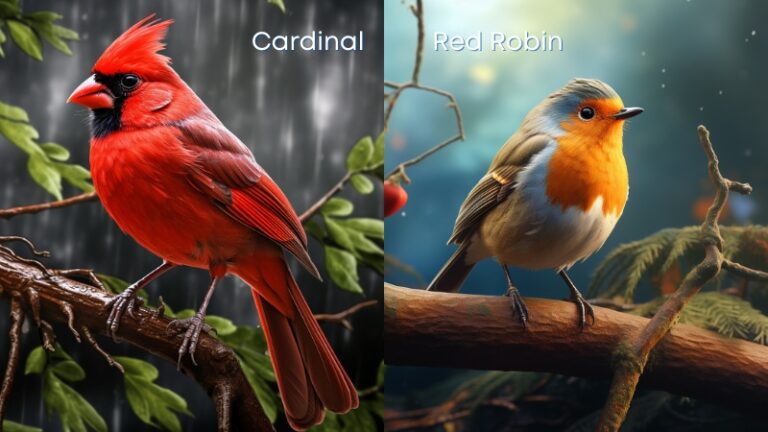Do Birds Fart: Unveiling the Gas-Passing Secrets of Our Feathered Friends
Birds, those magnificent creatures that grace our skies with their elegant flight and enchanting songs, have always intrigued us.
From their colorful plumage to their fascinating migratory patterns, there’s no denying the allure of these winged wonders.
But amidst all the admiration, a curious question often pops into our minds: Do birds fart?
Today, we embark on an avian adventure to uncover the truth about our feathered friends’ flatulence.
A Feathered Quest for Answers
To understand whether birds engage in the act of passing gas, we must first delve into the intricate workings of their unique digestive systems.
Unlike mammals, birds have a highly efficient digestive process that enables them to extract the maximum nutrients from their food.
This efficiency is essential for their lightweight bodies and soaring flights through the skies.
Avian Digestion: A Swift Journey
The journey of food through a bird’s digestive system is a rapid one.
It begins in the beak, where the food is broken down into smaller pieces before reaching the crop – a specialized pouch that stores and softens the food.
From there, it travels down the esophagus into the bird’s stomach.
Birds have two stomachs: the proventriculus and the gizzard.
The proventriculus secretes enzymes that start the breakdown of proteins, while the gizzard acts as a muscular grinding chamber, using swallowed stones to crush and grind the food into smaller particles.
A Unique Exit Strategy
Now, let’s focus on the crucial question at hand: Do birds fart?
The answer, intriguingly, is not a straightforward one. While birds do produce gas during digestion, it doesn’t exit their bodies in the same manner as it does in mammals.
In other words, birds lack the anatomical features necessary for traditional flatulence.
The Vent: An Alternate Escape Route
To expel waste, birds have a single posterior opening called the cloaca.
This multipurpose orifice serves as the exit point for both solid and liquid waste, as well as the transfer point for reproductive functions.
Consequently, any gases produced during the digestive process are expelled along with the other waste materials through the cloaca.
Therefore, we can say that birds don’t actually “fart” as mammals do.
A Whiff of Science
To reinforce our understanding of avian flatulence, let’s turn to the scientific realm.
Researchers have sought to investigate the gaseous emissions of our feathered friends through rigorous observation and analysis.
The Study of Flatus
In 2006, a team of Australian researchers conducted a study aimed at uncovering the truth about birds and flatulence.
They collected samples of air released from emus – a flightless bird species known for their large size and distinctive appearance.
The samples were then analyzed for the presence of methane, a common component of animal flatulence.
The Methane Mystery
Surprisingly, the results of the study indicated the presence of methane in the samples.
This finding hinted at the possibility of gaseous emissions from birds, although the exact origin of the methane remained uncertain.
It’s worth noting that methane can be produced not only by digestive processes but also by certain types of bacteria found in the gut.
A Paradigm Shift
While the study provided intriguing insights into the gas-passing habits of birds, further research is required to fully grasp the extent of avian flatulence.
Scientists continue to explore this topic, hoping to shed more light on the fascinating world of bird digestion and gas production.
The Environmental Impact
Beyond the sheer curiosity surrounding bird flatulence, some might wonder about its ecological implications.
As methane is a potent greenhouse gas, understanding its sources and factors contributing to its emission is vital for our understanding of the Earth’s climate.
Although birds are not major contributors to overall methane emissions, every source matters when it comes to preserving the delicate balance of our environment.
Methane in Perspective
It’s important to put the potential methane emissions from birds into perspective.
The vast majority of methane in the atmosphere is attributed to human activities such as fossil fuel extraction, livestock farming, and landfill waste.
In comparison, the contribution of birds, if any, is likely to be minimal.
The Broader Impact
While birds themselves may not significantly contribute to methane emissions, their role in the ecosystem should not be overlooked.
Birds play crucial roles as seed dispersers, pollinators, and natural pest control agents. Their presence is vital for maintaining a healthy and balanced environment.
By understanding their physiological processes, including gas production, we gain a more comprehensive understanding of these remarkable creatures and their place in nature.
A Curiosity Never Fades
The question of whether birds fart may seem lighthearted and amusing, but it reveals our innate curiosity about the natural world.
Exploring such queries not only provides us with interesting insights but also pushes the boundaries of scientific knowledge.
Our fascination with the minute details of nature fuels our desire to learn more, fostering a deeper appreciation for the intricate tapestry of life that surrounds us.
Final thoughts
In our quest to unravel the mysteries of bird flatulence, we have discovered that birds do not fart in the same way mammals do.
While they produce gases during digestion, these gases are expelled through the cloaca along with other waste materials.
The presence of methane in some studies hints at the potential for gaseous emissions from birds, but further research is needed to fully understand the extent and ecological impact of avian flatulence.
So, the next time you find yourself observing a flock of birds soaring through the sky, take a moment to appreciate the marvels of nature’s design.
While the question of whether birds fart may remain unanswered definitively, the pursuit of knowledge and the joy of discovery are what truly matter.
Keep your curiosity alive, for it is the spark that drives us to explore the wonders of the world, feathered or otherwise.

